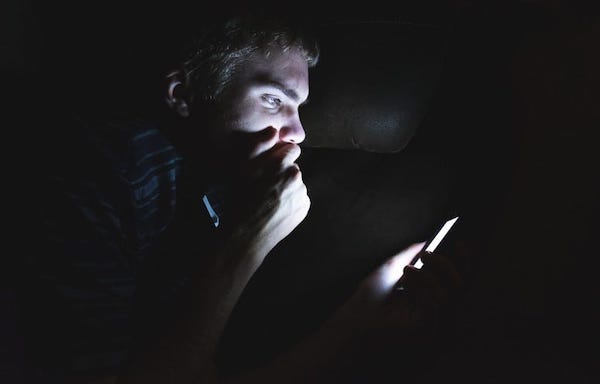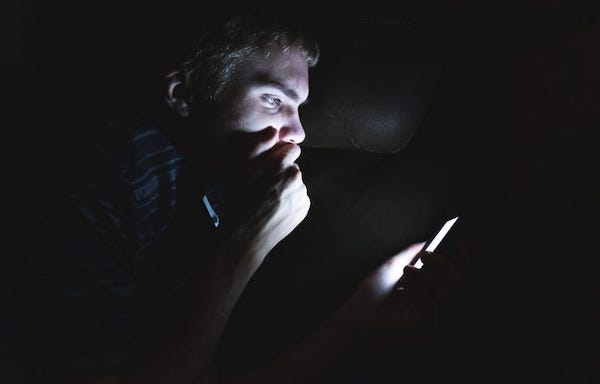COVID Stories: Sidestepping Doomscrolling and Staying Sane During Coronavirus


I’ll be honest. I’ve picked up some bad habits I’m not happy about during our collective coronavirus crisis. Possibly the worst is something that I assumed was my own routine: a compulsive need to check news sites over and over again, eating up hours of my week.
It turns out that my bad habit is called “doomscrolling”. When I read an article about this phenomenon, I felt oddly relieved. Not only was I not the only soul trapped on this bad-news treadmill, but it was a enough of a phenomenon to merit its own moniker and some hefty press to go along with it. Doomscrolling has been profiled in Wired, The New York Times, and NPR.
Doomscrolling is described by these outlets, respectively, as “an endless scroll through social media in a desperate search for clarity”, the “experience of sinking into emotional quicksand while bingeing on doom-and-gloom news”, and “incessantly [scrolling] though bottomless doom-and-gloom news for hours as you sink into a pool of despair.”
Sound familiar?
This is not just a bad habit. As the NY Times reports, “doomscrolling, combined with screen addiction, could take a significant toll on our mental and physical well-being, according to health experts. The activity can make us angry, anxious, depressed, unproductive and less connected with our loved ones and ourselves.”
On the CDC’s website about managing stress and anxiety during COVID, the agency specifically mentions limiting news consumption for your mental well-being: “Take breaks from watching, reading, or listening to news stories, including those on social media. Hearing about the pandemic repeatedly can be upsetting.”
According to Dr. Amelia Aldao, a clinical psychologist interviewed by NPR on the topic, doomscrolling not only plays into a fundamental human penchant to spot danger on the horizon, but it can reinforce the notion that we live in a dangerous world and make us unhappy even when we’re not scrolling.
“Our minds are wired to look out for threats. The more time we spend scrolling, the more we find those dangers, the more we get sucked into them, the more anxious we get,” Aldao told NPR.
For attorneys, who battle mental health issues like depression, anxiety, and substance abuse in greater numbers than most professionals, doomscrolling risks adding to an already gloomy experience.
So what can we snap out of our doomscrolling loop?
Recognize the Problem
Aside from what I’ve already mentioned, there’s enough evidence to fill a book that excessive screen time has negative effects on anxiety and depression. This is nothing new and precedes the coronavirus. Sprinkle in a little apocalyptic hopelessness and you have a bad psychological concoction.
Recognizing you have a bad habit is the first thing you need to do so that you can focus on a plan to rid doomscrolling from your life.
Set Timers
The device you’re using to scroll doom has a built-in timer. Employ it. Give yourself ten minutes to scan news and social media. When the timer goes off, leave the hopelessness behind. And plan to check in only two or three times a day.
Jump In, Jump Out
I live in Florida and over the years, have had to face down many hurricanes that threatened our community. However, one thing I learned with hurricanes is that all you really need to do is check the news every three hours to see what the latest forecast models indicate. Watching TV news or reading articles doesn’t really add information and can only serve to make you mental.
I’ve only recently embraced my own hurricane techniques for coronavirus and the other major events going on in 2020. For too long, I would let myself stew in the misery.
But now on my good days, I jump into the news, get the bare minimum information I need, and jump right back out. I’m as informed as I would be if I doomscrolled for an hour, yet without the searing sense of panic.
Cultivate an Offline Hobby
You can’t play the guitar and doomscroll at the same time. Same goes for hiking, playing bridge, knitting, gardening, or reading a novel.
Satisfying hobbies are “associated with lower blood pressure, total cortisol, waist circumference, and body mass index, and perceptions of better physical function.” according to an NIH study.
Read One of These Books Instead of your Doomscroll
If you haven’t picked up a book, or if you’re concerned you don’t have the concentration abilities to do so, it’s worth giving reading another go. I love to read, personally, and notice that the more I doomscroll, the less I curl up with a book.
If you haven’t read in a while, I suggest the following books that hook you from page one and don’t let go until the final page:
- Educated by Tara Westover
- American Dirt by Jeanine Cummins
- Bad Blood by John Carreyrou
- Recursion by Blake Crouch
Practice Meditation
Practicing meditation is the advice you don’t want to hear. It’s the mental health equivalent of exercising and eating well.
However, meditation works wonders, and you don’t have to meditate for 20 minutes twice a day. You can start with 3 minutes or 5 minutes – whatever you can tolerate.
Personally, I use the Headspace app. Start with the 10-day basics course and see how you do.
Final Thoughts
I have my good days and bad days when it comes to doomscrolling and too much screen time. But by embracing the techniques above, I know I’ll be able to leave the morass that is 2020 behind for a while.
Larry Port is the CEO of Rocket Matter, author of the ABA’s bestselling book The Lean Law Firm, host of The Ten Minute Law Firm Podcast and The Lean Law Firm Podcast.
Share post:







